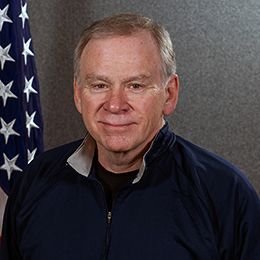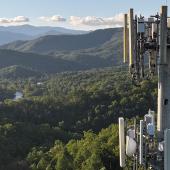John Hunt started with the First Responder Network Authority (FirstNet Authority) three years ago, but his support of public safety has been 34 years in the making. Throughout his career, Hunt has held numerous 911-related product management and public safety positions at AT&T, Southwestern Bell, Ameritech, OnStar, and TeleCommunication Systems, Inc. He also served as the Governor of Michigan’s appointee to the State 911 Committee for 25 consecutive years and has been a longtime member of both the Association of Public-Safety Communications Officials (APCO) and the National Emergency Number Association (NENA).
Now, Hunt is taking on a new role within the FirstNet Authority as our 911 SME and liaison to APCO, NENA, and the National Association of State 911 Administrators (NASNA).
We recently caught up with John to chat about his past experiences with public safety, the state of 911 infrastructure today, and his vision for the future of public safety communications.
How did you see communications tools and methods change during your career?
Hunt: My career has spanned some major technology changes that placed a great deal of stress on 911 public safety answering points (PSAPs) and Emergency Communication Centers (ECCs). When I first started, the only version of 911 was called “Basic 911” and it truly was “basic.” All it offered was abbreviated, 3-digit dialing (versus 7-digit) to reach a PSAP, and it only had the capability for voice communication. There was no caller data transmitted with the call.
“Enhanced 911” then added limited caller data to the voice call and also allowed for multiple PSAPs (now referred to as “911 PSAPs/ECCs”) to answer a person’s call when they dialed 911, so more calls were being answered faster. These improvements were then followed by wireless calls to 911, Voice over Internet Protocol (VoIP) calls to 911, and now “Next Generation 911,” or NG911. This latest stage of 911 will use end-to-end Internet Protocol (IP) when fully implemented and allow any 911 PSAP/ECC to communicate via voice and data with any other 911 PSAP/ECC in the country.
Now that FirstNet is bringing a dedicated communications network for public safety and new applications to the game, I feel like I’ve gone from “Fred Flintstone” to “The Jetsons” during my career!
What made you want to work with the FirstNet Authority?
Hunt: After hearing about the FirstNet Authority for a few years and interacting with some members of the FirstNet Authority team, I was certain that the mission was important and that the team had a true dedication to public safety coded in their “DNA.” It may sound corny, but I joined the FirstNet Authority because I felt that I could contribute to an effort that was not only developing and deploying “cutting-edge” technology, but that would also truly make a difference to the public.
Where do you see FirstNet having the greatest impact?
Hunt: By providing a reliable broadband connection for public safety, 911 PSAPs/ECCs will be able to finally share the rich data that NG911 will provide (e.g., real-time/two-way text, video, photos, sensor monitoring data) with in-field personnel. This will be significantly beneficial for public safety. Not only will this ability increase data exchange, improve situational awareness, and protect the safety of all persons involved in an incident, it will also allow public safety personnel to communicate with the public the way the public communicates with each other.
Currently, the public believes that 911 PSAP/ECC personnel can accept texts, videos, and photos, but that just is not the case today. As NG911 and FirstNet deployments grow, these expectations will soon become reality.
Contact John Hunt, Senior 911 Advisor, at John.Hunt@firstnet.gov or call 202-430-2168.
Sign up for his 9-1-1 TAKE newsletter HERE.

















